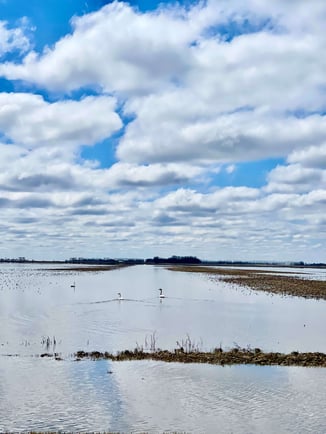Managing Moisture for Successful Planting and Healthy Stands
The optimism of planting this year may be a bit tempered with not only significant input price increases and availability issues, but also significant soil moisture challenges across the country. As we all know, water is the most important input for crop growth; crop insurance data indicates over 65% of all crop insurance claims are for not enough water, or too much of it.
To make matters worse, farmers are staring down the barrel of widespread water quantity challenges. As of mid-April this year, over 215 million crop acres are experiencing drought levels of precipitation. Meanwhile, large areas of many eastern states such as Indiana, Michigan, New York, and Alabama are experiencing extremely high soil water balances. These drought and saturated areas can even persist in close proximity to one another: Between two saturated regions of central Wisconsin and central Illinois, for example, lies a large stretch of drought at the two states’ border.

Flooded fields in Northwest Minnesota. Photo courtesy of Steven Ficocello.
Preparing soil for too much or too little water
To some extent, we are dependent on the weather—but just how much can we impact soil moisture to give crops the best start and right amount of moisture all season long? With specific land management practices, we can have a significant sway over what happens with rain when it actually reaches the ground. Two terms are particularly important here: infiltration and water-holding capacity.
If the water cannot get into the soil (infiltration), or excess water cannot drain down out of the root zone, then soil will become more vulnerable to too much or too little precipitation. But if soil can infiltrate and hold onto more moisture (water holding capacity), then crops will have the soil moisture to survive longer into drought periods and also will experience less saturated soil conditions that can steal nitrogen, induce seedling diseases, and drown out young cash crops.
Flooded fields in Northwest Minnesota. Photo courtesy of Steven Ficocello.
Carbon farming practices to better manage moisture
How much can soil management impact these critical soil capabilities? Turns out, a lot. Adding perennial crops or cover crops with no-till can increase infiltration by at least 45%. That means 45% more water to survive a drought.
And what about water holding capacity? Water holding capacity is determined by soil type, amount of soil organic matter, and extent of pore space available. We cannot change soil type, but practices can improve or degrade soil organic matter levels over time. Same with pore space through healthy soil structure. Here again, carbon farming practices such as no till-and cover crops help.



